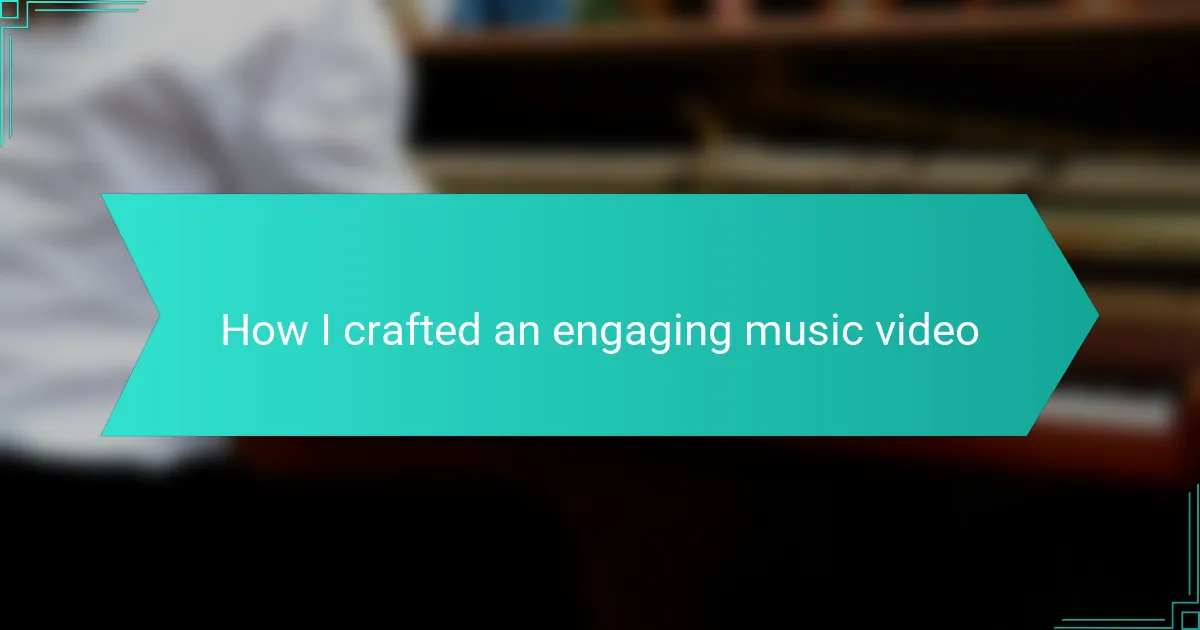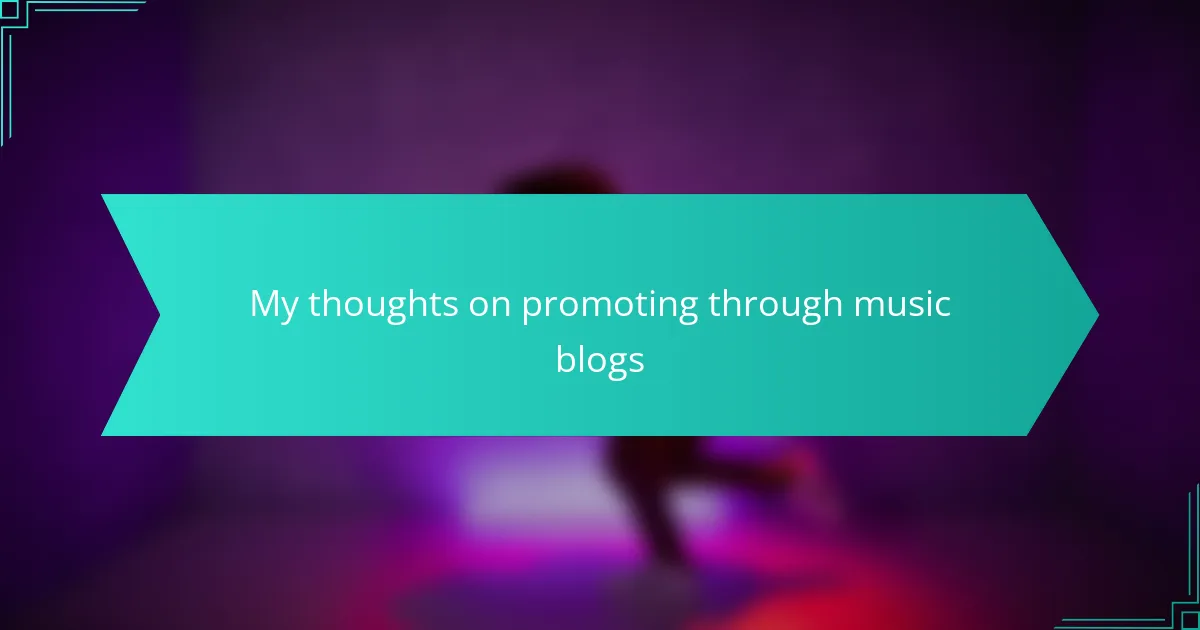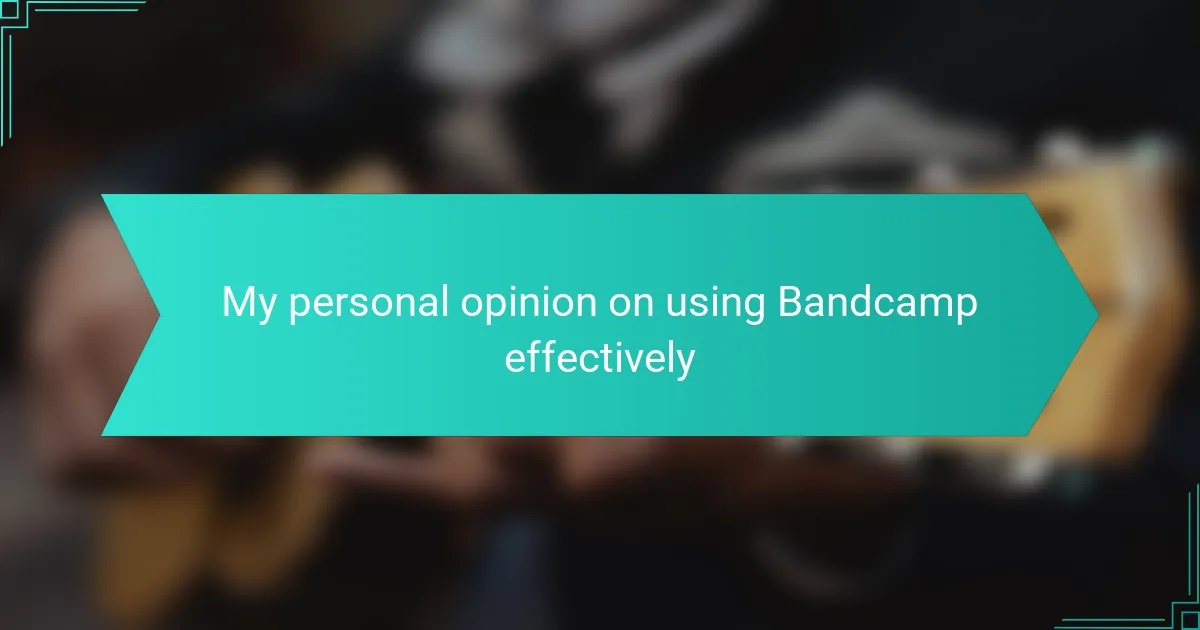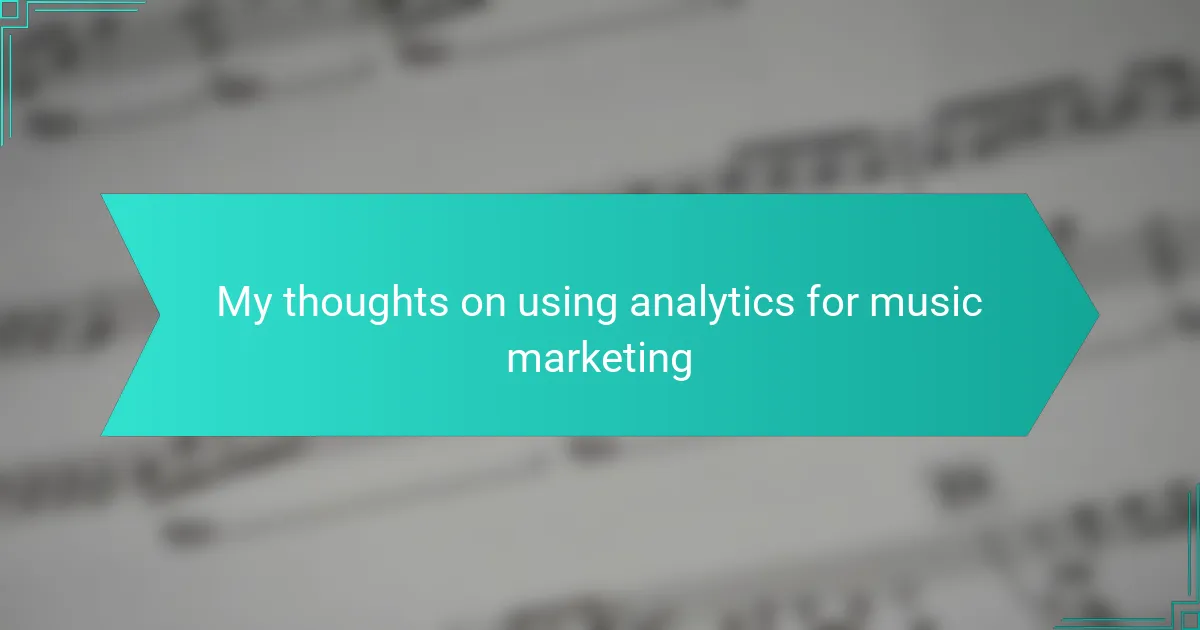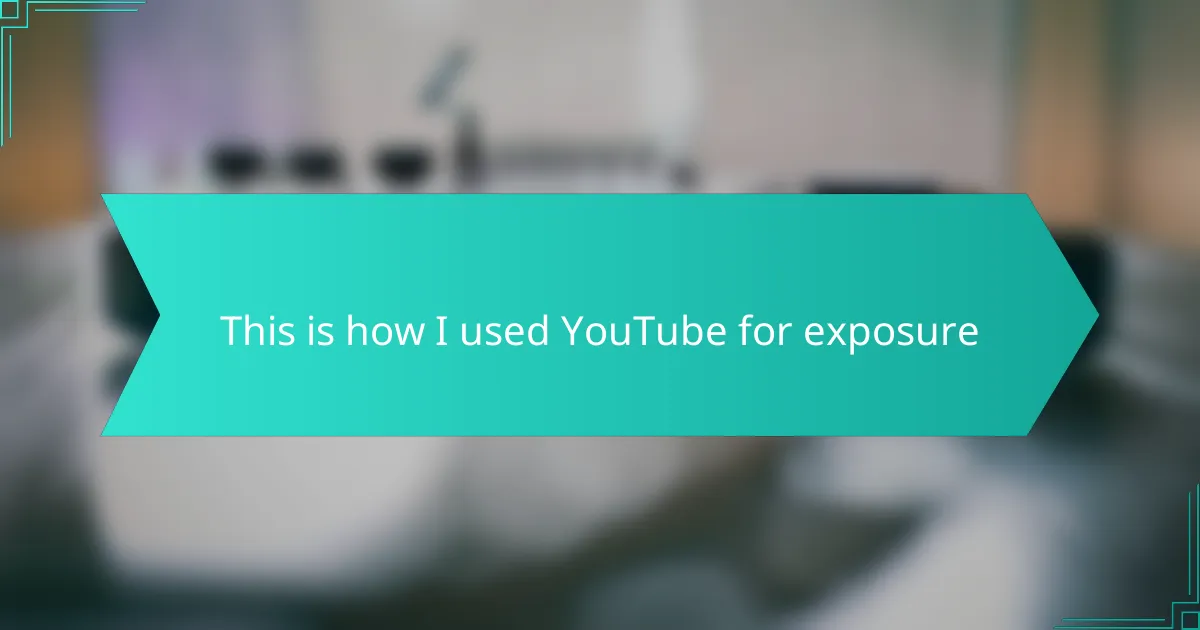Key takeaways
- Utilize a variety of resources such as online tutorials, networking platforms, and marketing tools to enhance your career as a musician.
- Music videos are essential for building an artist’s brand and are key marketing tools that can significantly expand audience reach.
- When creating a music video, develop a strong concept, plan logistics meticulously, and focus on the editing process to evoke the desired emotions.
- Personalize your music video by sharing your story and using meaningful visuals to create a deeper connection with your audience.
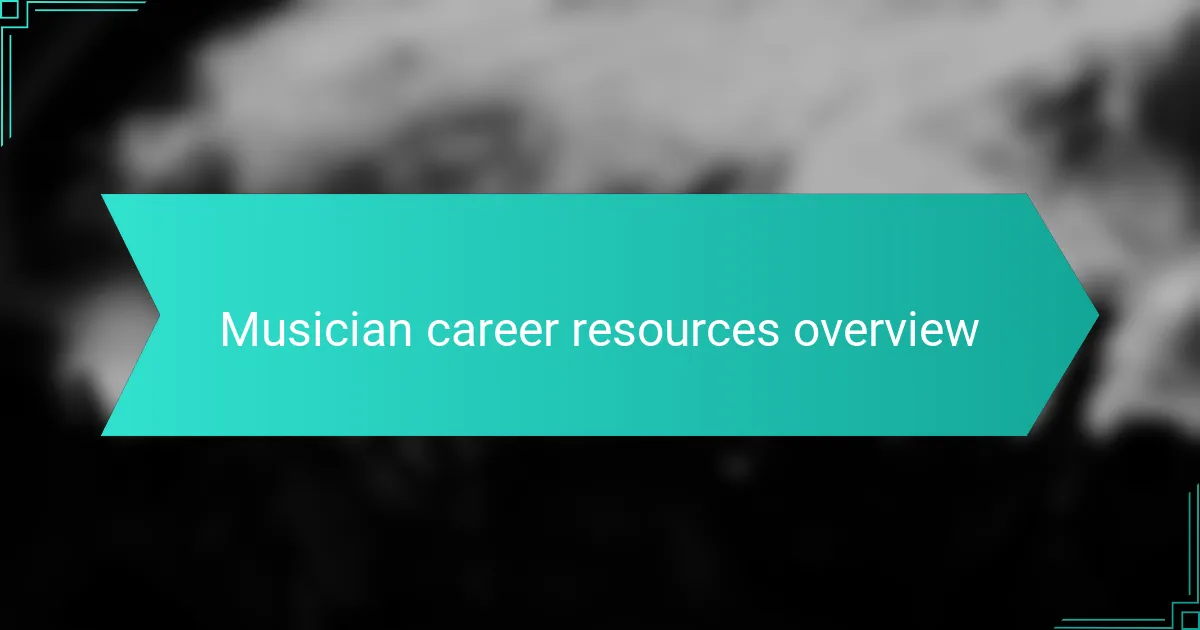
Musician career resources overview
When navigating a musician’s career, understanding the resources available is vital. I’ve found that platforms offering tools for marketing, networking, and production can significantly enhance an artist’s journey. For example, utilizing online tutorials helped me improve my video editing skills, making my music videos more visually appealing and engaging.
In my experience, collaborating with fellow musicians and marketers through various networks can provide invaluable insights. I’ve often connected with others who have shared their resources, which has brightened my own path. These interactions often lead to opportunities I never would have found on my own.
Here’s a comparison table highlighting different musician career resources:
| Resource Type | Description |
|---|---|
| Online Tutorials | Courses and videos to improve skills, such as video editing or songwriting. |
| Networking Platforms | Social media groups and professional networks for connecting with other musicians and industry professionals. |
| Marketing Tools | Resources for promoting music and managing social media channels effectively. |
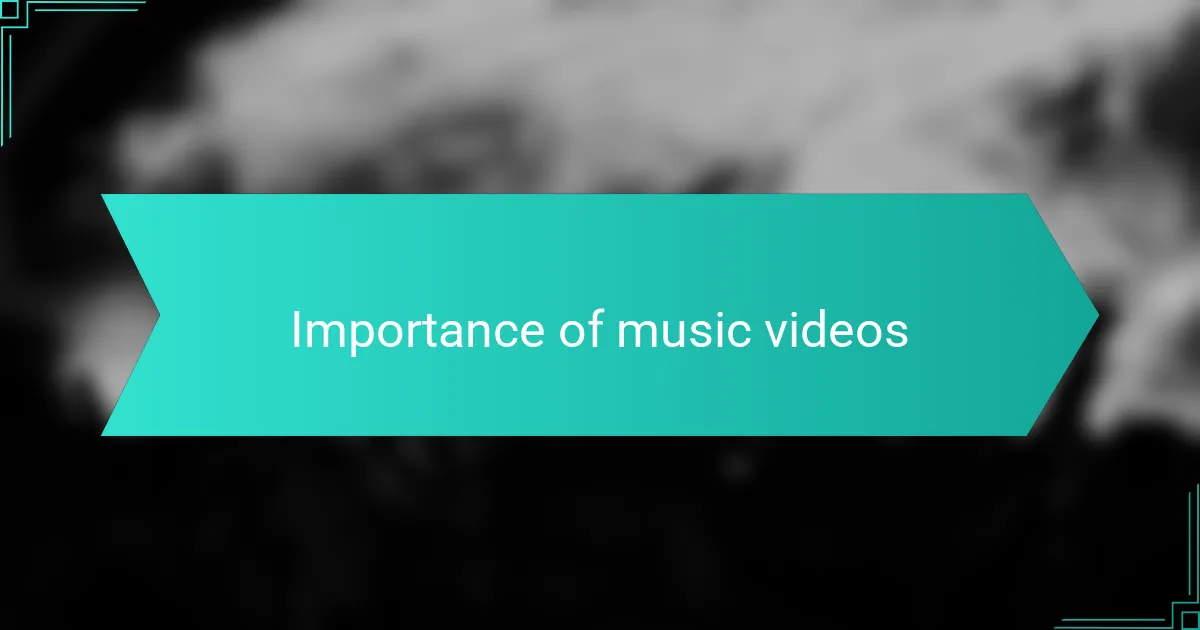
Importance of music videos
Music videos play a crucial role in defining an artist’s brand. From my own experience, a well-crafted video can elevate a song, giving it a visual identity that resonates with viewers on an emotional level. Have you ever felt a deeper connection to a song because of its imagery? I know I have. It’s fascinating how a single visual theme can enhance the lyrics and melody, making the song unforgettable.
Moreover, music videos are powerful marketing tools. They can reach a wider audience beyond just audio platforms, allowing fans to engage with the music in an entirely new way. I remember when I shared my first music video; the response was overwhelming. It opened doors, as fans began to share it, effectively boosting my visibility. The ripple effect of a compelling visual can truly be transformative.
In today’s fast-paced environment, standing out is more important than ever. A striking music video not only captures attention but also fosters a deeper emotional connection with the audience. Reflecting on my journey, I’ve realized that every view, share, and comment from a music video can lead to more opportunities in the industry. Isn’t it incredible how visuals can become a bridge between the artist and the listener?
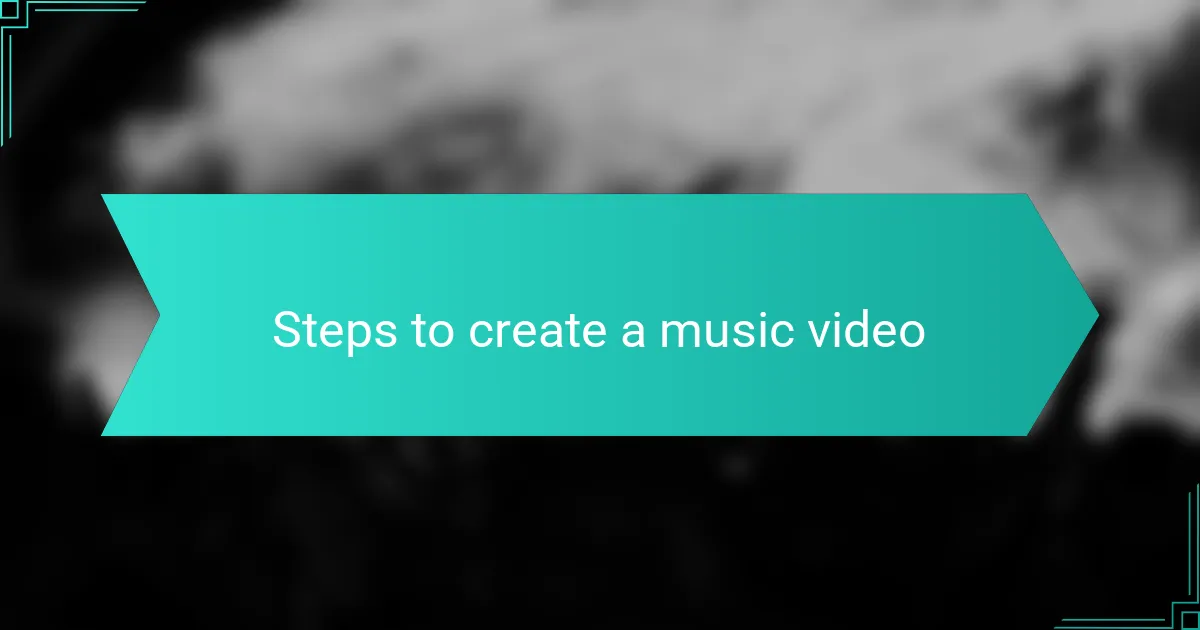
Steps to create a music video
To create an engaging music video, the first step is to develop a concept that reflects the emotion and message of the song. I often find it helps to brainstorm ideas by creating a mood board or outlining the storyline I want to portray. Have you ever watched a video and felt it aligned perfectly with the song’s vibe? That’s the magic I strive for in my videos.
Next, it’s essential to plan the logistics. This includes scouting locations, gathering a team, and determining a budget. When I started making videos, I underestimated the importance of a solid plan. I once shot a video in a beautiful park but forgot to account for lighting. I learned the hard way how crucial planning can be!
Finally, once filming wraps up, the editing process is where the real creativity happens. I enjoy diving into editing software to weave together visuals that complement the music. During this phase, I often ask myself what emotions I want the audience to feel. Have you experienced a thrill hearing your favorite song paired with stunning visuals? That’s exactly what I aim to achieve.
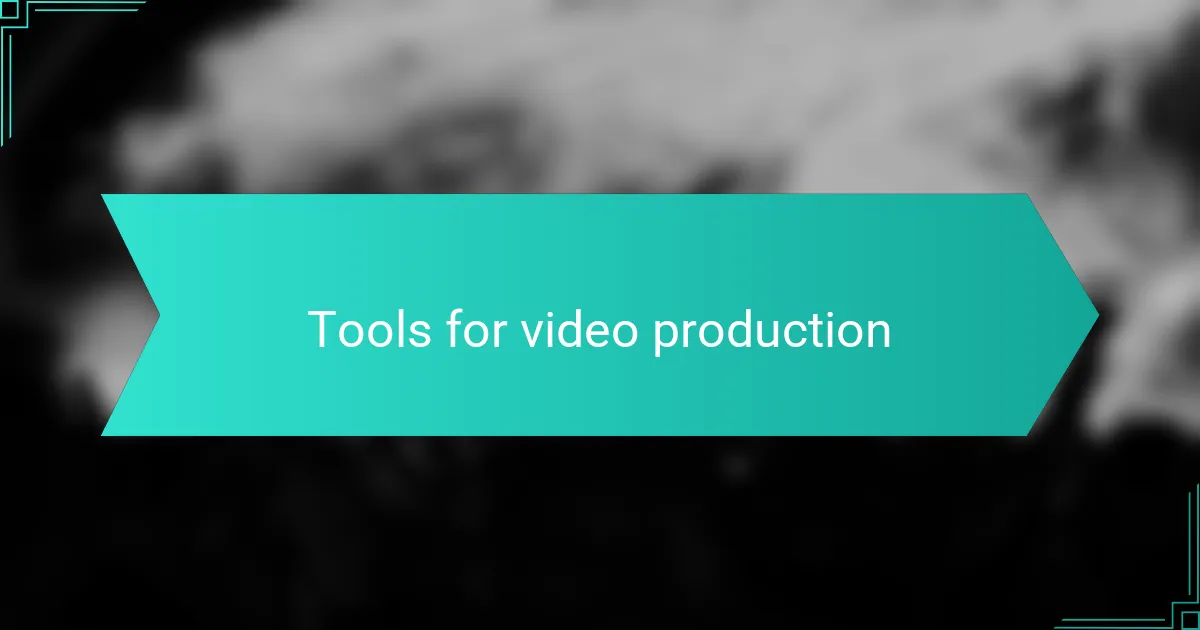
Tools for video production
When it comes to video production, having the right tools makes all the difference. I remember the first time I set out to create a music video—armed with a simple smartphone and a couple of basic apps. While my initial results were rough around the edges, those tools enabled me to visualize my creativity and learn through trial and error. Over time, I discovered that investing a bit in more advanced equipment could elevate my storytelling and expand my artistic expression.
It’s interesting how different tools cater to various aspects of production. For instance, while a good camera captures stunning visuals, sound quality can make or break the viewer’s experience. Reflecting on my journey, I’ve learned that matching the right software to my skill level is equally important. Understanding how everything works together has been a crucial part of my growth.
Here’s a comparison of some essential tools I’ve used along the way:
“`html
| Tool | Purpose |
|---|---|
| Smartphone | Basic shooting, accessibility |
| DSLR Camera | Higher quality visuals, depth of field |
| Tripod | Stabilization for steady shots |
| Editing Software | Post-production, adding effects |
| Microphone | Enhancing audio quality |
“`
Each tool has its unique contribution, and I’ve found that understanding their roles has helped me tell more compelling stories through my videos.
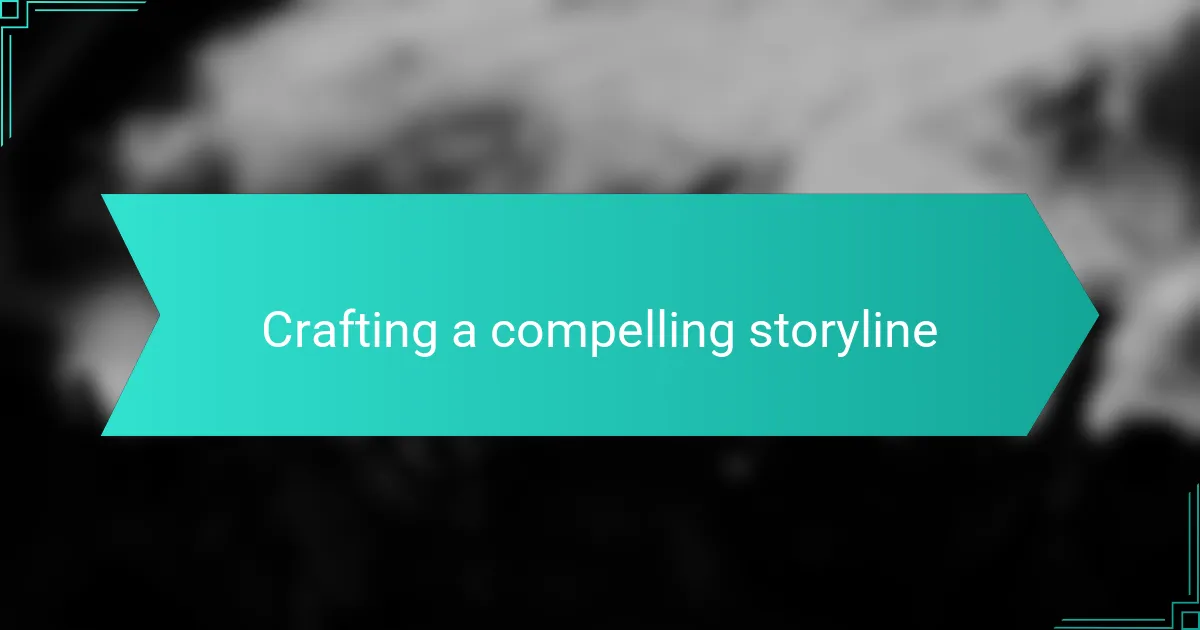
Crafting a compelling storyline
When I approached crafting the storyline for my music video, I knew it had to resonate with my audience on a deeper level. I drew inspiration from my experiences, weaving in themes of love and loss, which often strike a chord with listeners. By reflecting authentic emotions, I aimed to create a narrative that viewers could both relate to and feel invested in.
To build an engaging storyline, consider the following elements:
- Character Development: Create relatable characters that reflect your audience.
- Conflict: Introduce challenges or dilemmas that evoke emotions.
- Resolution: Ensure that the story concludes with a sense of closure or insight.
- Visual Metaphors: Use imagery that enhances the emotional depth of the narrative.
- Pacing: Balance quieter moments with more dynamic scenes to keep viewers engaged.
By combining these elements, I found that my music video’s story not only captured attention but also fostered a deeper connection with my audience.
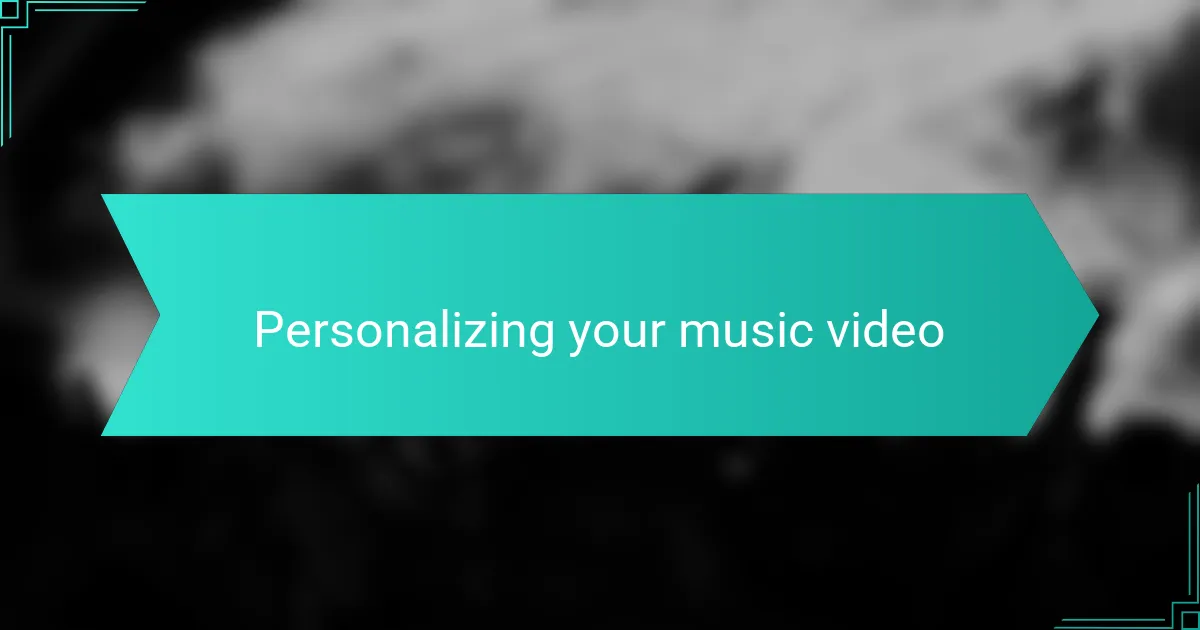
Personalizing your music video
When it comes to personalizing your music video, infusing your own story can create a profound connection with your audience. I remember when I made my first video, I shared snippets of my personal journey—my struggles and triumphs—because I believed it would resonate with others. Including elements that reflect who you are, like your background, passions, or inspirations, can make your video not just a visual treat, but an authentic representation of your artistic journey.
Engaging visuals that align with your music’s theme also play a critical role in personalization. For instance, I chose a location that held deep meaning for me—a park where I spent time reflecting on my dreams. It transformed the video into a narrative that was both relatable and intimate. By focusing on personal experiences and visually representing them, you invite your viewers into your world, making them feel like they are part of your creative expression.
Here’s a comparison of different personalizing techniques:
| Technique | Description |
|---|---|
| Personal Story | Share your journey and emotions related to the song. |
| Symbolic Locations | Use places that have personal significance to enhance authenticity. |
| Visual Themes | Incorporate imagery that reflects your musical identity. |
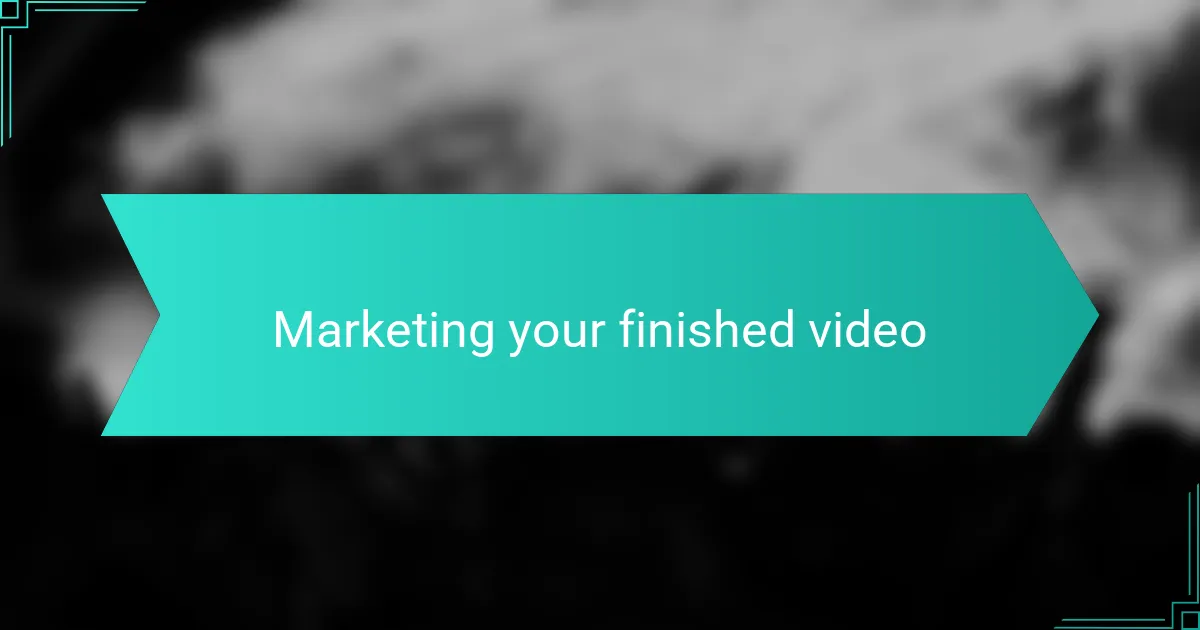
Marketing your finished video
Marketing your finished music video is crucial for reaching a wider audience. I remember the excitement I felt when I finally completed my own video, but that excitement quickly turned into anxiety over how to share it effectively. I found that leveraging social media platforms where my target audience hangs out made a significant difference.
Initially, I underestimated the power of a well-timed release. I scheduled my video premiere around key dates in my genre, which helped generate buzz. Additionally, I’ve noticed that engaging with fans through behind-the-scenes content and teasers before the release fuels anticipation and creates a personal connection.
Here’s a comparison of various marketing strategies for music videos that I’ve found effective:
| Strategy | Description |
|---|---|
| Social Media Promotion | Utilizing platforms like Instagram and TikTok to reach followers and create excitement. |
| Email Newsletters | Sharing exclusive content and links directly with fans who subscribe to your updates. |
| Collaborations | Partnering with other creators or influencers to expand your reach and tap into their audience. |
